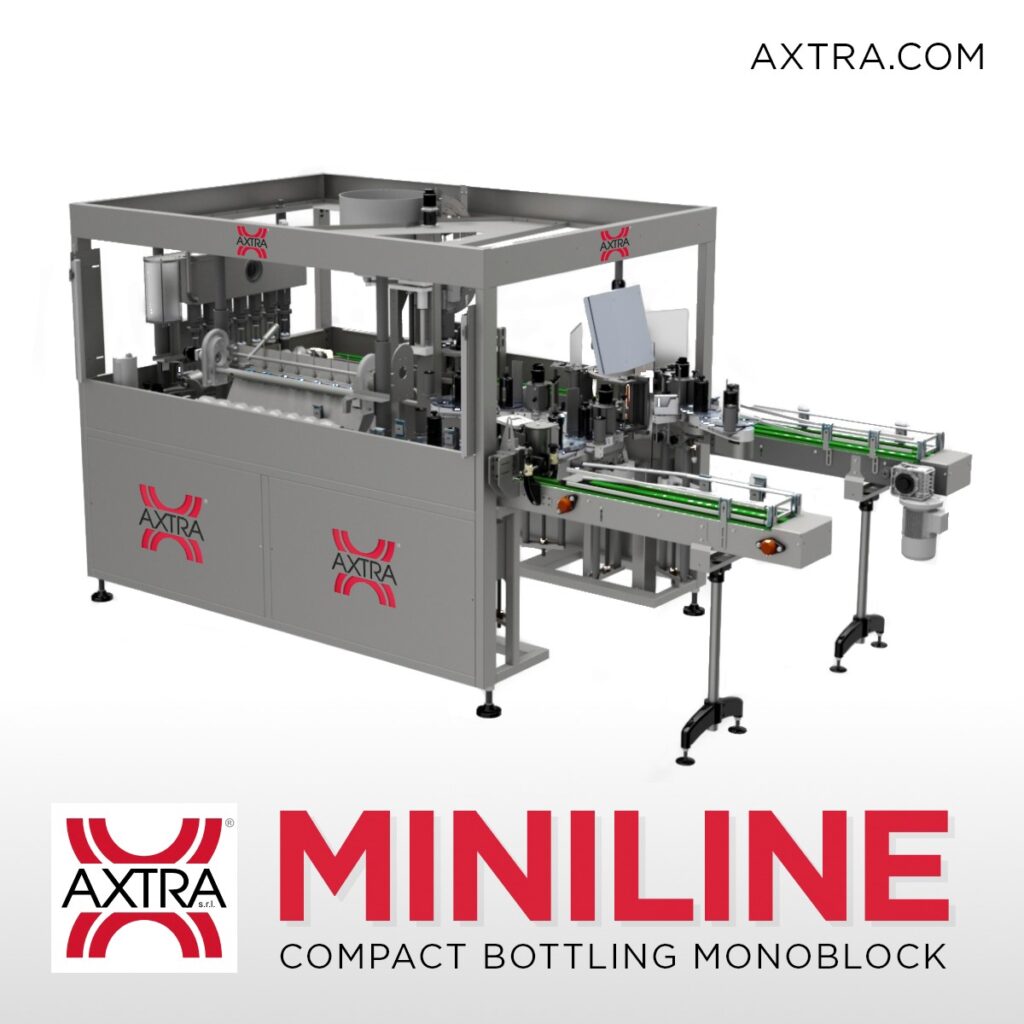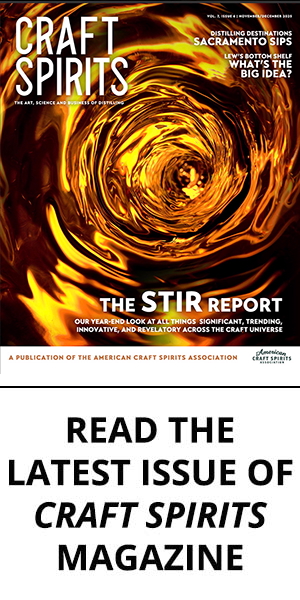Packaging traceability is evolving from a must-have into a competitive advantage.
Authenticity is one thing that differentiates craft spirits from larger mass-produced products on the market. In fact, what makes craft so special is that each individual bottle can have its own story to tell.
Until recently, distillers had to tell that story mostly in person. But now, technology has caught up, allowing packaging to take on a larger role in storytelling as well.
For example, some cutting-edge craft distillers now feature scannable QR codes on their bottles linking to all kinds of details about the journey from farm to glass. While at the same time, it can also include valuable information for production and track and tracing purposes.
“I always tell my clients that every [project] has to accomplish at least three things,” says spirits consultant and strategic advisor Blair Woodall. “A QR code for traceability helps with compliance, can also be used for marketing, and can be a PR push. You have to have track and trace regardless; the law requires it. So, you might as well make it into a great quality control device and an absolutely wonderful marketing piece.”
And yet Woodall estimates that only a handful of craft distilleries in the U.S. are taking full advantage of the power of QR codes and, as a result, may be missing out on word-of-mouth influencing by all the spirits ‘nerds’ out there.
One portion of the spirit’s journey that, while not as sexy, is just as important is during the final stage of production: bottling and packaging. Technology to track and trace that process used to be out of reach of most craft distillers. But that is beginning to change thanks to some recent advances.
Traceability On the Bottling Line
AXTRA is one company working at the forefront of packaging traceability. Based in Italy, the company recently opened a new facility in North Carolina. The company’s traceability solutions are integrated particularly into labeling and end-of-line operations, where product safety is finalized.
For example, each machine can also be interfaced with the distiller’s information systems for continuous and real-time exchange of all information related to different production stages—from raw materials (products, containers, caps, capsules, labels, sleeves, etc.), different levels of semi-finished products (containers filled and capped, versus filled, capped, and labeled), to finished products.
For complete monitoring and archiving of primary packaging, an electronic detection machine is available to scan the entire external profile of individual containers. Once the scan is completed, a flat image is generated that allows for filling and packaging quality control.
This archiving, linked to the batch number, provides indisputable information in case of traceability requests or, worse, disputes.
This system can also monitor product temperature variations during filling: if, during the production of a predefined batch, the temperature variation alters the product’s characteristics, separate batches can be created to distinguish and, if necessary, discard non-compliant products.
”What we would like to do with our customer is to connect all the activity, all the problems that we can control during the production of each bottle, [compared] with the standard parameter of the customer to understand if we have to define new batches because the quality of the product is not exactly the same,” explains Davide Nolli, AXTRA’s CEO and cofounder.
Such technology can streamline limited-edition batches, batch tracking, and create data-rich packaging that tells a deeper brand story. As mentioned earlier, while such track and tracing technology used to be out of reach of craft distillers, AXTRA says its Miniline is a good fit for many craft spirits producers with smaller bottling runs.
Tequilera TAP (TTAP) in Mexico uses an AXTRA line for some of its bottling. “Traceability is very, very important for our customers, particularly in the case of tequila,” says Gustavo Hernández Gómez, TTAP’s Deputy General Manager. “You have to know the fields from where the agave comes, the batches that you produce, where they were bottled, if they were aged or not, who you ship them to. It’s something that has to be done.”
Adds Francesco Musi, sales area manager for AXTRA, “Traceability is a concept that is evolving with time. In the past, it was more related to regulatory issues, but today with awareness and expectations amongst consumers and especially the younger generation increasing, it is something that producers must be more aware of to leverage as a competitive strength.”
Bringing Each Bottle’s Story to Life
The Shoreham, Vermont-based WhistlePig Whiskey is one of those handful of American distilleries Woodall referred to using QR codes to their full effect today, specifically on its line of Beyond Bonded Rye and Bourbon.
Scanning the code of these bottles brings up a page with a wealth of detail designed to appeal to any whiskey nerd, including the barrel number, tasting notes, rye variety, the name and geographic coordinates of the field where it was harvested (viewed on a Google Map if desired), the soil chemistry, even the amount of precipitation which fell while it was being grown. Also included are details about the mashbill, fermentation, the still and barrel used, maturation, bottling date, and even the team that bottled that whiskey.
“There’s this journey of discovery and learning that we see craft drinkers are interested in learning as they go—what all of these things mean,” says Eliza McClure, vice president of marketing & innovation at WhistlePig.
For WhistelPig customers, like Austin Hedges, of Blast Brewing Co., being able to share all that information with potential buyers has been a game-changer. “I’m about educating whiskey drinkers, and Beyond Bonded makes my job easy due to the secret QR. Nerdy isn’t a bad thing when this bottle is cracked,” he says.
And Meghan Ireland, WhistlePig’s Chief Blender, says tracking all of this information has had additional benefits for the distillers themselves. “Some of it, like soil levels, was also us trying to learn how to be better farmers and to get better yields,” she says. “So some of the information was stuff where we were like, ‘Oh, this will be cool to share with our consumers,’ and to have people have that touch point. But also some of it was to help us do better on our production side.”
And if you think such technology is too expensive for a craft distillery, think again. WhistlePig’s team logs all of this information manually. Then, the company’s in-house digital team builds out the custom website pages per barrel and connects it to the QRs and it goes live from there. “Since everything is connected to one individual barrel, it’s not an updating process except for once a year when we release a new harvest, or a new crop of barrels, and then those go live and into the market,” says McClure.
One company that specializes in QR code-based traceability is the U.K.-based io.tt. “While our U.S. craft footprint is still emerging, we have seen strong uptake in adjacent categories like boutique wine, where producers are using our platform to bring transparency and consumer engagement together,” says Eddy Peters, the company’s business director. “The fact that smaller producers have been able to adopt the same technology as the global players shows how accessible it is.”
Peters says the process is very straightforward. A distiller adds an io.tt QR code or NFC tag to their packaging, most often on the label or closure. Once in place, that code connects to a secure cloud-based record for each bottle or batch. Producers decide what is public, for example, provenance, production details, or tasting notes, and what remains private for compliance, such as batch tracking or supplier information. The same code can then also link consumers to cocktail recipes, loyalty programs, or storytelling that deepens the brand connection.
“We already work closely with existing label printers and converters, so there’s no requirement for new infrastructure. From there, it’s about choosing what you want to deliver, traceability on its own or combined with engagement, loyalty, or sustainability features,” Peters says.
As Nolli of AXTRA sums up, “These trends are transforming traceability from a technical feature into a value-generating asset. And the companies that act now will be the ones shaping the standards of tomorrow.”


